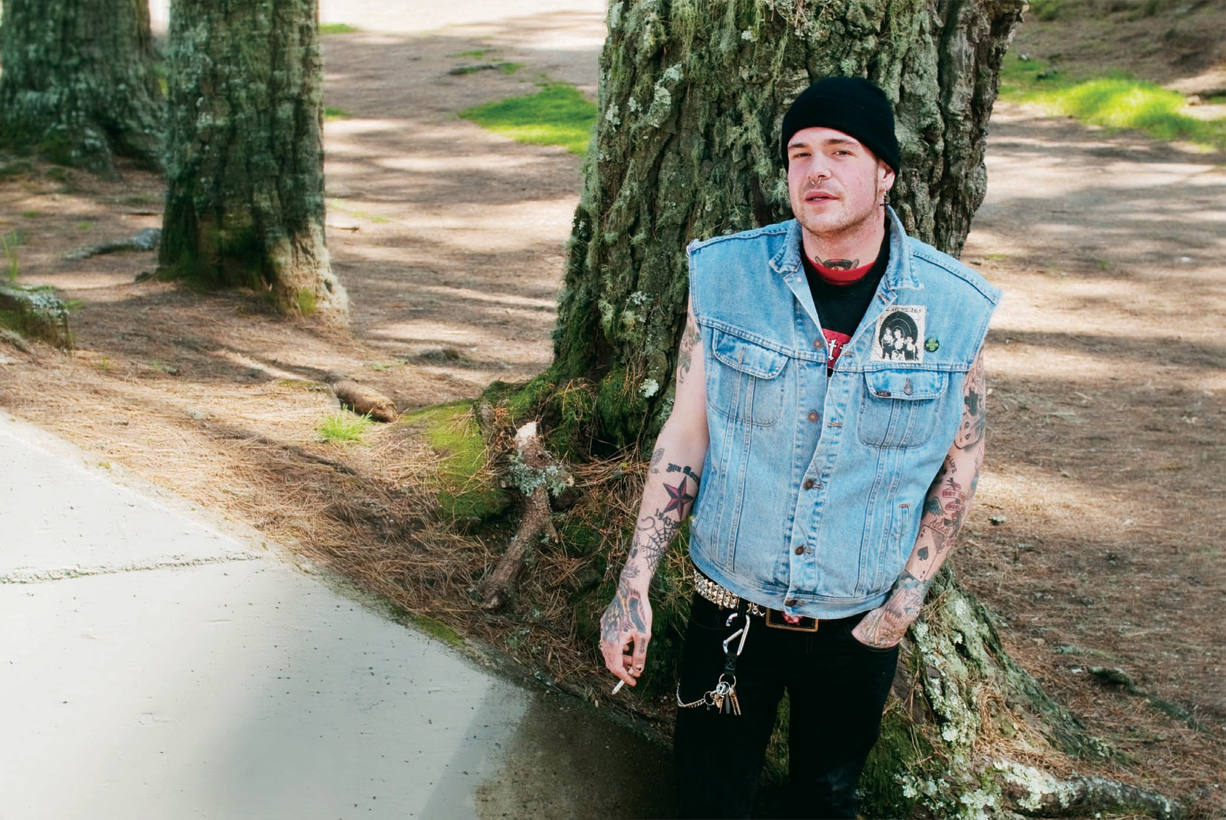The east entrance of the 24th Street rapid-transit station in San Francisco is almost perpetually caked in pigeon shit. The grime-patina floor and supposed-to- be-shiny metal subway turnstiles are mottled with the splatterings, creating a slimy/crusty minefield for commuters to navigate. On that stained floor, carefully wedged between the landmines, is a worn black guitar case with some loose change and a couple of bills staring up forlornly from a plush field of forest green.
Commuters descending the escalator toward this entrance see the case first as they approach. Then they hear the voice. And if it is their first time hearing it, their eyes grow wide. Or they wrinkle their brow. They ask themselves, “Is that a recording? Is there some kind of commercial being shot here?” It just sounds too real — too much like him. As they descend the escalator further, they see the source of that voice, and things get even more confusing. Because that sound — how could it be coming from that person?
The only thing more striking than how much Jesse Morris sounds like Johnny Cash is how little he looks like him. He is a man in black, yes, but his black is a scruffy leather jacket and jeans with patches of bands like Flipper, The Last Resort, and Toxic Reasons.
It’s not exactly Grand Ole Opry attire. Peaking out from beneath the sleeves of said jacket is a tattooed coat of many colors that Cash would definitely have bypassed. And instead of that iconic slicked-back pompadour, Morris rocks a stubbled dome and unruly mutton chops.
But none of these things stop Morris’ rich but weathered baritone from sounding hauntingly like that of Cash. It’s the centerpiece of Morris’ spare change revue, which also includes tunes penned by the likes of Hank Williams (any and all of them), David Allan Coe, Merle Haggard, and Morris himself.
To bring his talents of imitation and permutation to his peripatetic customers, Morris gets up at an hour when the outlaw-country crowd was usually just getting to bed. Once at the station, he sings and strums until he has made enough money or his voice goes out. That can mean anywhere from 40–50 ditties in the course of a morning.
Ten years ago it was unlikely that Morris would even have sat through a song by any of those country artists, much less learn to perform one. As a teenager living in the beachside hamlet of Pacifica, California, Morris says that he thought of “the music of pain” as “old country-bumpkin” junk. And then at age 15, in a move that would lay the concrete for his life path, Morris was simultaneously introduced to the music of both G.G. Allin and Johnny Cash.
At the time, he was in an alternative high school for kids with mental disorders, having been diagnosed with major depressive disorder as a young person. From that first exposure, country and punk would form intertwining strands in a rope that Morris says saved his life. Cash especially left an impression. “I’ve always wanted to belong but never did,” he says. “It seems like he speaks to people like that.” Morris soon began teaching himself Cash’s songs.
A few years and several hundred practice hours later, Morris tried out the songs he had learned for the other kids in Job Corps, a vocational education program for young people located on Treasure Island in San Francisco Bay.
The response was positive enough that Morris began to think about expanding his audience. With his only spending money coming from a $12/week stipend and whatever he could hustle up as a cigarette dealer to the other kids, he had a definite monetary motivation for taking his act under the road. According to Morris, the first time he played in the subway system — aged all of 18 years — was like walking into a supermarket naked.
But he soon learned that being timid wasn’t going to make him any money. “You’ve gotta give ‘em your all or they’re not gonna give you nuthin’,” Morris says. “They don’t wanna see some shoe-gazin’ fuckhead up there.”
Morris connected with his initial audience enough to cover his coffee and cigarette expenses for the day. “The first time, I made 10 or 12 bucks, and I thought I was rich,” Morris says with a grin. “‘Wow! That’s more than minimum wage!’”
The Bay Area Rapid Transit (BART) system doesn’t require that buskers get permits to play in its stations. In fact, the only time that Morris has been hassled was when he was having a bad day and played a G.G. Allin song that even he admits probably wasn’t appropriate for the venue.
The laissez-faire attitude toward BART performers has allowed Morris to play over 1,000 “shows” in various subway stations in the city over the past seven years. At an average of two hours per show, that may mean Morris has had more time on stage, such as it is, than any other musician his age in the Bay Area. He has developed his craft to the point that not only is he able to support himself largely through his playing, but he also was recognized by San Francisco Weekly as “Best BART Musician” in 2008.
As a part of a campaign to make commuting not seem like such a soul-destroying experience, BART hailed Morris’ talents in a feature story on its website, noting how he had gained a reputation as the “punk-rock Johnny Cash” of the subway system. “Mom was proud,” Morris says, laughing. “Her son’s the most famous panhandler in San Francisco!”


Miss you Jesse.